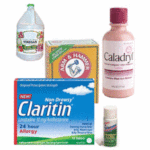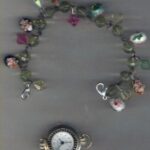Eczema is most commonly found in toddlers and infants, primarily under the age of three years, yet can affect people of any age group. Eczema is thought to be caused by a problem with the immune system, and can be triggered by a list of factors including: soaps, washing powders, jewelry, and can even be caused by profuse sweating.
The symptoms normally are dry, reddened, itchy, burning skin, but can vary with each individual. Most people will agree that the first symptom that they notice is the intense itching sensation. The rash associated with the different types of eczema can present itself over any body surface area. In some instances, eczema will be called dermatitis, yet the words are interchangeable, and the meaning is the same.
Atopic dermatitis is the most common form of eczema and is characterized by the dry, reddened, irritated skin as previously mentioned. Atopic dermatitis has also been found to have a genetic link amongst family members.
Contact dermatitis can cause the same type of reaction, but is triggered by the affected person coming in direct contact with the allergen. Some examples of things that can trigger this type of eczema are perfumes, cosmetics, and laundry detergents.
Seborrheic dermatitis is also referred to as “cradle cap”, or simple dandruff, depending on the severity of the symptoms. It affects more areas than just the scalp. Eczema may also appear on the face, mainly in the nasal folds and “smile lines” on the cheeks. These areas will have a yellowish, scaly, and sometimes inflamed appearance.
Stress, poor hygiene practices, oily skin, and family history of seborrheic eczema are commonly found characteristics in sufferers of this annoying disorder.
Stasis dermatitis is a skin irritation found in the lower legs, and is caused by venous insufficiency. This type of skin disorder occurs in aging and elderly adults with symptoms of reddish-brown skin discoloration of the lower legs and dry itchy skin.
If the circulation of the lower extremities continues to worsen, these areas can become oozing, non-healing stasis ulcers. As the edema increases, circulation to the feet and lower legs decreases.
If you suspect that you have any type of eczema, and are ready to get some relief from the constant itching caused by this skin condition, please consult a physician.
When you visit the doctor be prepared to tell him some answers to some very important questions. When did the rash first appear? What areas are affected, and describe characteristics of the rash. Does anything, or exposure to any substances trigger an attack? Is it more prone to happen during periods of excessive stress? Do you have any other family members with this problem? These are all things that your doctor may ask with your initial visit.
Changes must be made in a person’s lifestyle when a diagnosis of eczema has been confirmed. Confirmation is based on the doctors assessment of the patient’s signs and symptoms, since there is no labwork that can be done to test for eczema.
Changes in lifestyle may include the avoidance of any known triggers that cause eczema flare-ups. The patient must be sure to use any topical or oral agents strictly as prescribed by the physician. The patient must adhere to any bathing and body hydrating recommendations suggested by the doctor.
Antihistamines are the frequently used drugs of choice for treating the annoying itching that accompanies all types of eczema. Most topical treatments are corticosteroid creams which help reduce inflammation. Corticosteroid
All agents are used mainly in extreme cases when other topical agents or treatments have failed to lessen the severity of symptoms associated with eczema. Please consult your family physician or a dermatologist if you have symptoms of eczema and want to find relief from the aggravation it can cause.
Source:
http://www.medicinenet.com/script/main/art.asp?




